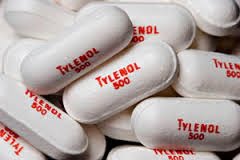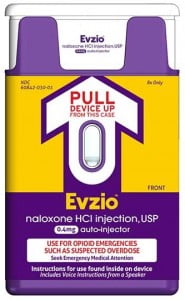 I met a lovely 53 year old gentleman, who was suffering from severe low back and hip pain for over a year, diagnosed with a herniated disc. He had tried physical therapy with some relief, but still was unable to eliminate his pain. After diagnosing and treating muscles in his low back, buttock, and thigh, he reported no low back pain, and was discharged from our office. However, after five years, he returned to our office, stating that he had foot pain, diagnosed with plantar fasciitis, and unable to rock climb or hike without severe pain in his calves and feet. After identifying and treating multiple muscles in his calves, shins, and feet, he reported 100% relief, and even finished a 10 day rock climbing trip. Although you may be given one diagnosis, sometimes we find muscle involvement and are able to eliminate the pain!
I met a lovely 53 year old gentleman, who was suffering from severe low back and hip pain for over a year, diagnosed with a herniated disc. He had tried physical therapy with some relief, but still was unable to eliminate his pain. After diagnosing and treating muscles in his low back, buttock, and thigh, he reported no low back pain, and was discharged from our office. However, after five years, he returned to our office, stating that he had foot pain, diagnosed with plantar fasciitis, and unable to rock climb or hike without severe pain in his calves and feet. After identifying and treating multiple muscles in his calves, shins, and feet, he reported 100% relief, and even finished a 10 day rock climbing trip. Although you may be given one diagnosis, sometimes we find muscle involvement and are able to eliminate the pain!
pain medications Archives
How important is your diagnosis?
Patient Story – Meet Parker
I had the pleasure of meeting Parker (name changed for privacy) a few years ago. I met Parker after he had extensive surgery related to his progressive scoliosis. He reported pain in his chest, spine, and neck. He had received many nerve block injections to his spine without relief. His physical examination identified multiple muscles as a source of his pain.
After treatment to various muscles in his upper and lower body, Parker reported significant relief in pain. He was able to start playing ice hockey and running in 10K races.
Although Parker had a successful fusion to treat his curving spine, he still had severe pain, which came from altered muscle tissue. Muscle treatment plus the fusion allowed Parker to reclaim his life. Without the addition of muscle treatment, a successful surgery would not have had a good outcome.
NMES versus TENS
What is the difference between NMES and TENS?
Simply put, NMES, or neuromuscular electrical stimulation, also known as EMS (electrical muscle stimulator), causes muscle contractions, and TENS produces a sensation to compete with the pain sensation. NMES is provided by a device that attaches to electrodes, which are placed onto your skin over a muscle you want to stimulate. Muscle stimulation causes the muscle to contract the way it would if you were exercising the muscle, so NMES can help with a muscle that has gotten smaller (atrophy) or suffers from spasms or swelling (edema). TENS is a handheld instrument that sends an electrical impulse to the nerves in the skin on the painful area. When it does its job, you feel a buzzing sensation instead of your usual pain.
Why Mast Cell Activation Syndrome is a tricky diagnosis
Mast Cell Activation Syndrome (MCAS) is a common condition that can cause widespread pain in the body as well as allergy symptoms like hives, itchy skin, and congestion. MCAS is hard for doctors to diagnose for a few reasons. The main reason is that it is an under researched condition despite its commonality. Doctors are only recently starting to understand just how common MCAS is, and how important it is to study it.
MCAS has a lot of symptoms that aren’t frequently associated with each other. In fact, MCAS symptoms can occur all over the body, for example, the skin (hives), the gastrointestinal system (stomach pain), the cardiovascular system, or the respiratory system. With these seemingly unrelated symptoms, MCAS presents as a confusing condition to those who are unfamiliar with it. It is a condition that may even require multiple experts to treat due to its vast range of symptoms.
Thankfully, more and more primary care providers are learning about this common condition that may affect up to 17% of the general population, as research has been expanding greatly in the past decade. More treatment options are currently being developed in the clinical trials stage. If you have MCAS, or think you might, we encourage you to learn more about a clinical trial opportunity we currently have in our clinic.
Acetaminophen
The BMJ (what used to be called the British Medical Journal) just published an article stating that acetaminophen (ie Tylenol) has been found to provide no relief in low back pain (compared to a placebo). Acetaminophen was also related to a risk of having an abnormal liver test. The article included data from 13 randomized controlled trials (RCTs).
An RCT to evaluate a drug is a research study where one group of people receives the actual drug (in this case, acetaminophen) and the other group receives a placebo (a pill with no active ingredient, generally a sugar pill). Then, data is collected from both groups to see if either achieved any pain relief. In this analysis, it shows that whether you receive acetaminophen or a sugar pill, you had the same amount of pain relief – meaning that active drug had no real pain relief effect.
relief. In this analysis, it shows that whether you receive acetaminophen or a sugar pill, you had the same amount of pain relief – meaning that active drug had no real pain relief effect.
Although most of the patients I see find no relief from acetaminophen, a small percentage of patients do, so don’t completely dismiss this drug when it comes to helping your pain. However, if you do take acetaminophen, make sure that you’re not taking too much. The FDA recommends taking less than 3000mg a day. This means if you’re taking Extra Strength Tylenol (500mg), you can only take 6 pills a day, or regular strength, 300mg, 10 pills a day. Higher amounts can lead to liver damage that could even be life-threatening.
What To Do When Back Pain Causes Overdose?
“We don’t appreciate what we have until it’s gone.” If only we had a dime for every time we heard this. Perhaps the reason it is such a common expression is the simple truth in it. This certainly applies to our health, but specifically our backs. We probably all take our good health in vain, until something goes wrong. By the time we are in our forties over twenty percent of us experience some form of back pain. And what do we do when we experience pain? Well, unfortunately many people will turn to strong painkillers. This means opioids, morphine-like painkillers. And, while we have written about this topic in the past, there is something new on the horizon. Evzio, the brand name of injectable Naloxone, is a prescription medicine that can block the effects of morphine and related painkillers. Approved by the FDA in April 2014, it allows a patient to quickly treat themselves or be treated by a family member if the patient has overdosed on opioids.
In the past, Evzio was difficult to obtain due to its high cost. However, recently The Clinton Foundation announced that it has negotiated a lower price for Evzio (see NYT article). This will allow municipalities to more easily purchase this medication, making it more available to those who need it.
It is a sad reality that many people will turn, in desperation, to painkillers as an answer to their aching backs. We, at the Norman Marcus Pain Institute, only use opioids as a last resort. Our method of finding the source of the pain and treating it has eliminated back pain for thousands of patients.. Nevertheless, with the rise of overdoses each year, the increased availability of naloxone to non-medical personnel will allow lives to be saved.
49 States Adopt Prescription Drug Database to Prevent Prescription Drug Abuse
Because of the growing problem of addiction, misuse, and diversion, 49 states have now adopted a state prescription drug database. You may have read an article recently in The New York Times about Missouri being the only state that has not adopted such a database. In New York, as a prescriber of controlled substances, each time a patient is prescribed any type of controlled substance, I must log into the NYS website to confirm that a patient is not receiving other medications from other doctors.
 I found a few patients who had not been honest with me and had received medications from other doctors. Unfortunately, the small occurrence of dishonest behavior has obliged all doctors to be alert for the possible misuse of medication. At the Norman Marcus Pain Institute, I implement several rules for patients receiving any type of controlled substance from me. Here are a few of them:
I found a few patients who had not been honest with me and had received medications from other doctors. Unfortunately, the small occurrence of dishonest behavior has obliged all doctors to be alert for the possible misuse of medication. At the Norman Marcus Pain Institute, I implement several rules for patients receiving any type of controlled substance from me. Here are a few of them:
• Only one physician can prescribe all pain medications.
• Only one pharmacy should be used to obtain all pain related medications.
• All medications, including herbal remedies and over the counter medications, need to be reported since all medications can interact with one another.
• Medications must be kept in a safe and secure place, such as a locked cabinet or safe.
Following these simple rules will help protect my patients and their families from improper use of pain medication.
How antidepressant medication can affect your pain
Many patients with chronic pain become depressed; therefore it is not surprising that many of these patients will receive antidepressant medications. What is very interesting is that these antidepressants not only can decrease depression associated with pain, but they can also decrease pain itself. They are frequently used to treat persistent pain associated with problems in nerves. The reason that antidepressants are effective for pain is that the chemicals in the nervous system that are associated with depression also are associated with pain.
Antidepressants increase the available amounts of chemicals which affect your mood. These chemicals include serotonin, norepinephrine, and dopamine. The two most common types of antidepressants are:
- SSRIs (Serotonin Specific Reuptake Inhibitors) – Antidepressants which only increases the amount of serotonin available. Examples of SSRIs are escitalopram (Lexapro), fluoxetine (Prozac), citalopram (Celexa), and sertraline (Zoloft).
- SNRIs (Serotonin/Norepinephrine Reuptake Inhibitors) – Antidepressants which increase the amount of serotonin and norepinephrine available. Examples of SNRIs are venlafaxine (Effexor) and duloxetine (Cymbalta). Examples of Tricyclic Antidepressants (a type of SNRI) are amitriptyline (Elavil), and nortriptyline (Pamelor).
SSRIs are not as effective for pain relief as SNRIs.
Even though the antidepressants may help diminish pain, their side effects can be unacceptable. A recent review found that although approximately 1/3 of patients who took antidepressants for neuropathic pain experienced moderate pain relief or better, 1/5 discontinued use due to adverse side effects.[1]
Common side effects of antidepressants are nausea, dizziness, insomnia, weight gain/loss, dry mouth and diminished interest in sex (decreased libido). If you’re not having reasonable pain relief with one of these medications, it should not be continued.
[1] Saarto, T., and P. J. Wiffen. “Antidepressants for Neuropathic Pain: A Cochrane Review.” Journal of Neurology, Neurosurgery & Psychiatry 81.12 (2010): 1372-373. Print.
NSAIDs for pain relief
The next series of blogs is a brief discussion of different types of medications used for pain.
NSAIDs
Non-steroidal anti-inflammatory drugs (NSAIDs) are generally one of the first line of medications used in the initial treatment of pain. They are exactly what their name means – they are not steroid medications (like cortisone or prednisone) and they reduce inflammation which is the body’s response to any damage from any cause. When inflammation occurs there is pain along with redness, swelling and heat, which are collectively known as the cardinal signs of inflammation. Examples of NSAIDs are ibuprofen (Advil/Motrin), naproxen (Naprosyn), meloxicam (Mobic), and diclofenac (Voltaren). Aspirin is similar to the NSAIDs in almost every way but curiously it helps prevent heart attacks whereas NSAIDs may cause them (see below).
 Although NSAIDs have a number of side effects, the two most common are stomach irritation and an increased tendency to bleed. That’s why you are advised to eat when taking NSAIDs and why you have to stop taking NSAIDS before any type of intervention that may cause bleeding (such as injections or surgery). In order to decrease the side effect of stomach irritation, many have switched to a topical NSAID, most commonly diclofenac which is offered as a patch (Flector-patch) or gel (such as diclofenac or Voltaren gel). Other potentially serious side effects include kidney failure – if your kidneys are not working properly the NSAID can cause them to stop functioning, asthmatic episodes if you are prone to having asthma, and heart attacks if you have cardiovascular disease (heart disease, high blood pressure, history of stroke).
Although NSAIDs have a number of side effects, the two most common are stomach irritation and an increased tendency to bleed. That’s why you are advised to eat when taking NSAIDs and why you have to stop taking NSAIDS before any type of intervention that may cause bleeding (such as injections or surgery). In order to decrease the side effect of stomach irritation, many have switched to a topical NSAID, most commonly diclofenac which is offered as a patch (Flector-patch) or gel (such as diclofenac or Voltaren gel). Other potentially serious side effects include kidney failure – if your kidneys are not working properly the NSAID can cause them to stop functioning, asthmatic episodes if you are prone to having asthma, and heart attacks if you have cardiovascular disease (heart disease, high blood pressure, history of stroke).
Image courtesy of anekoho/FreeDigitalPhotos.net





